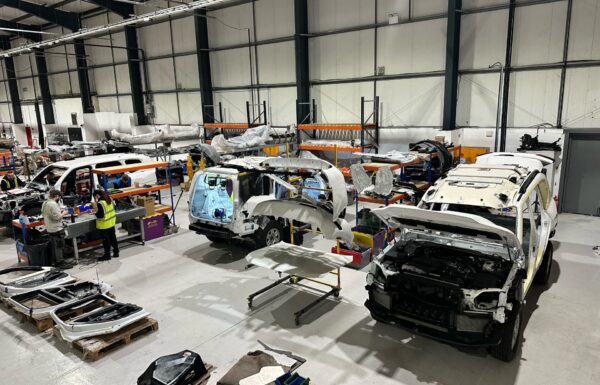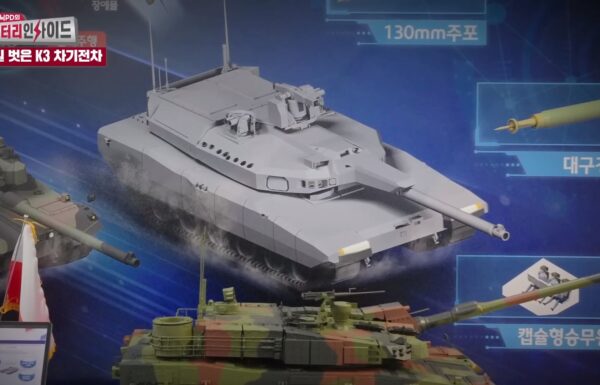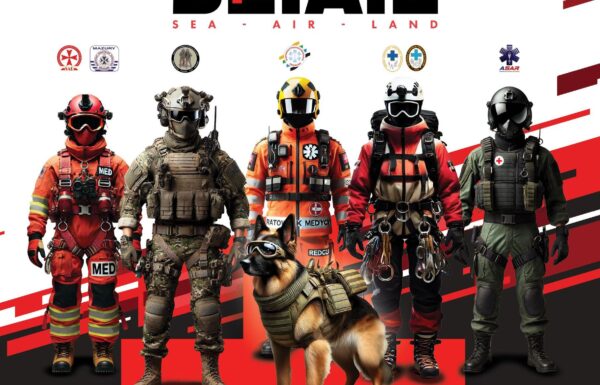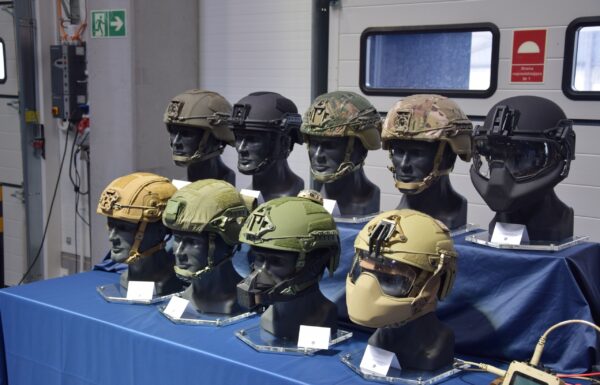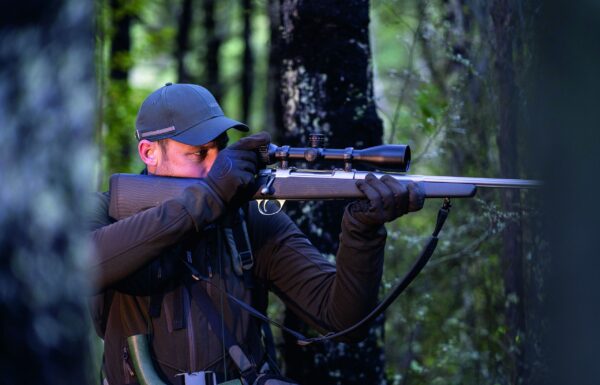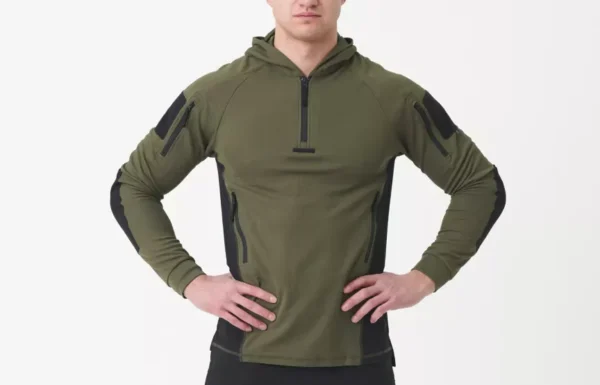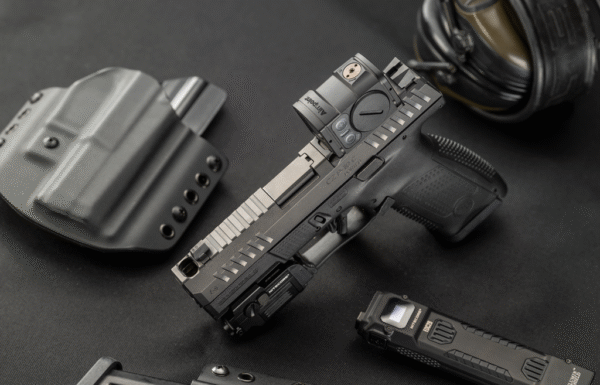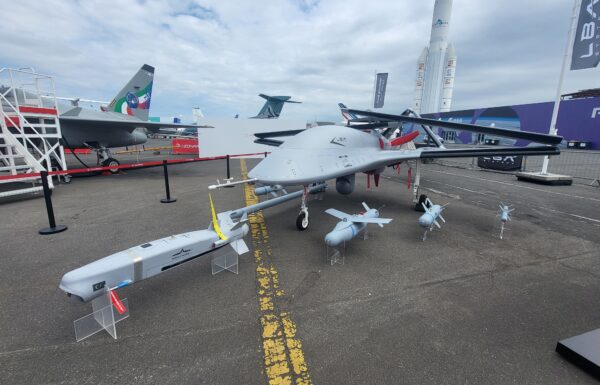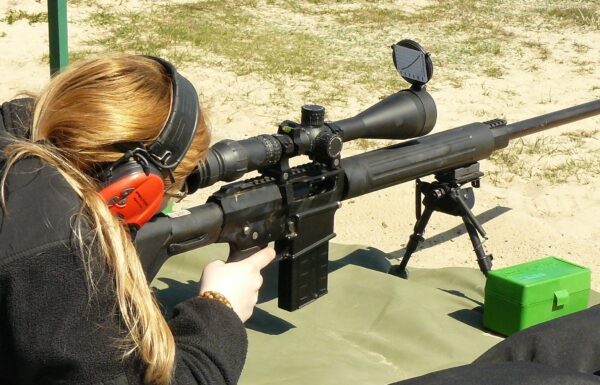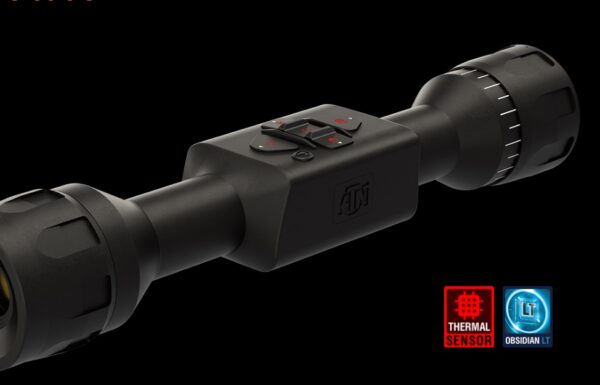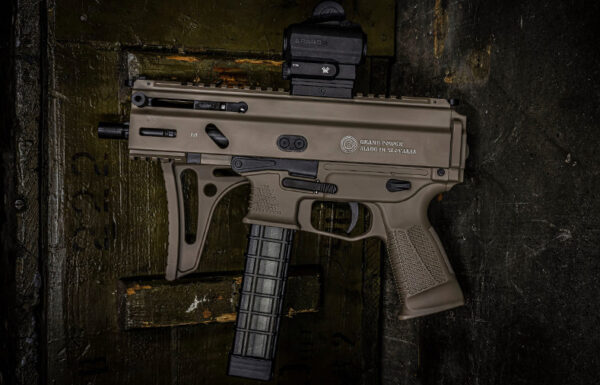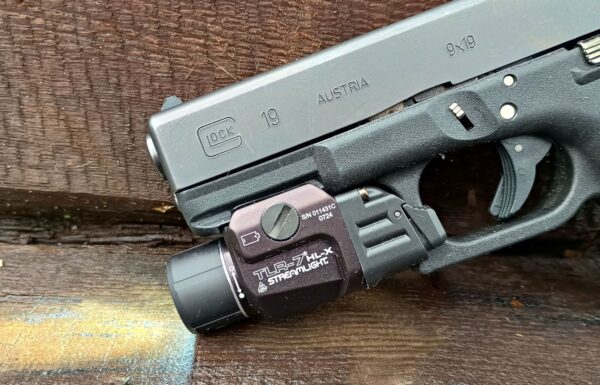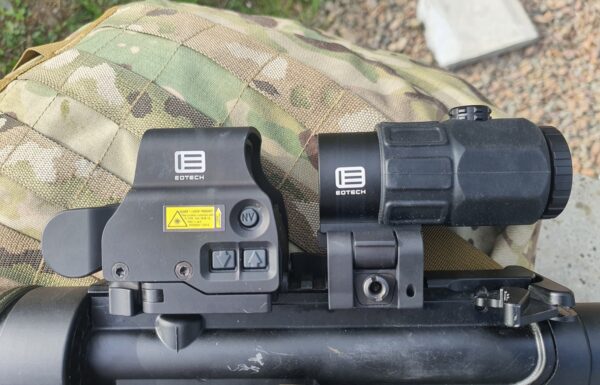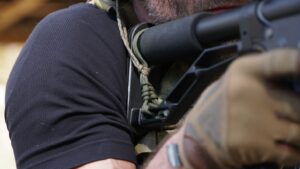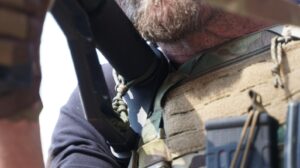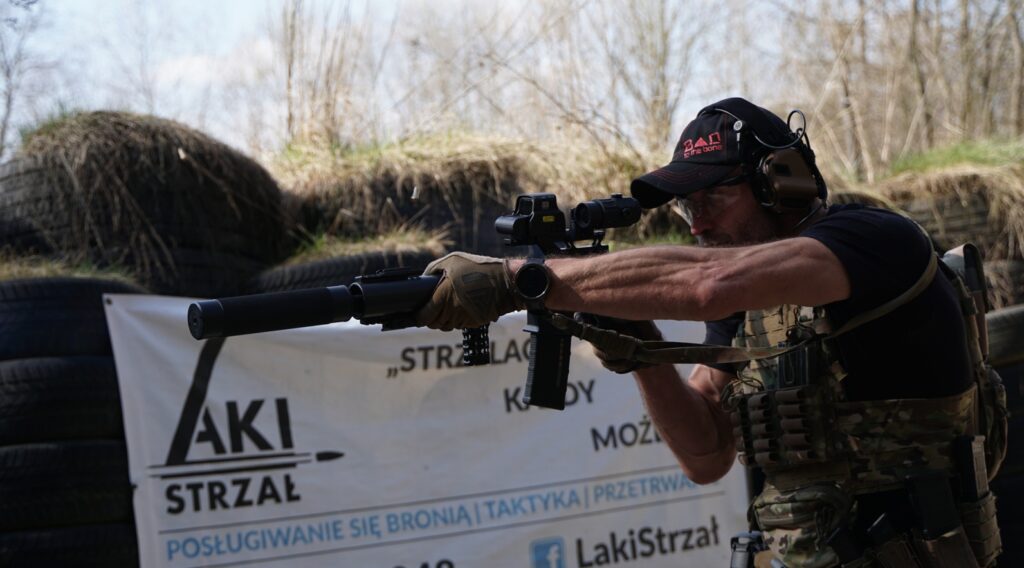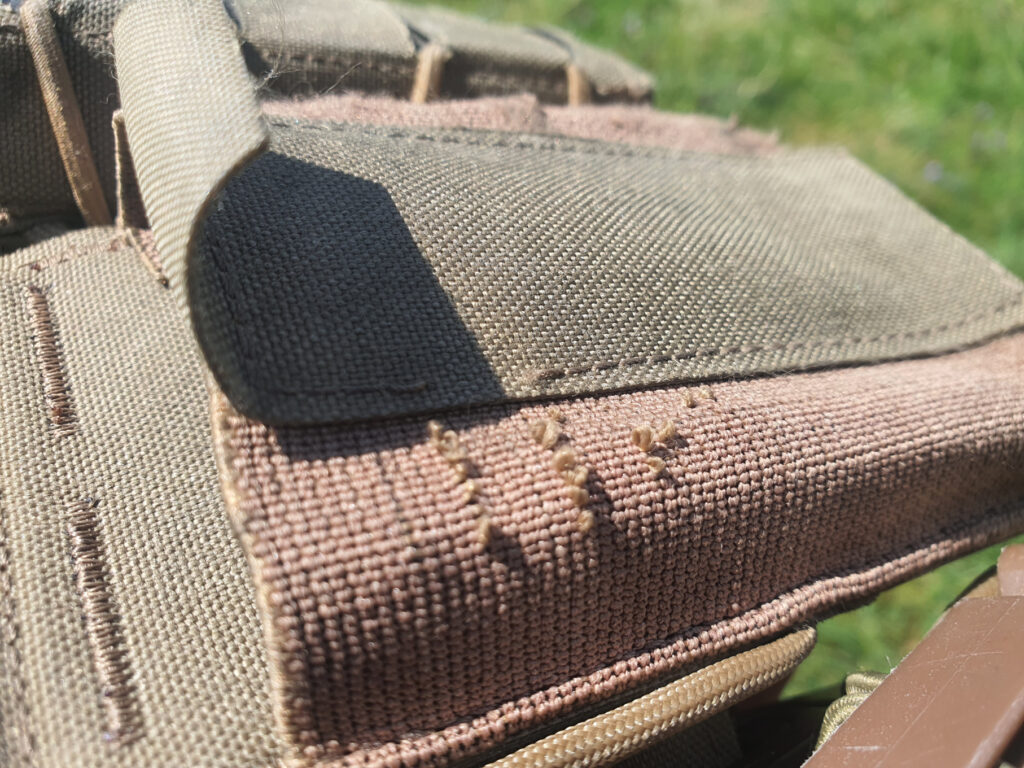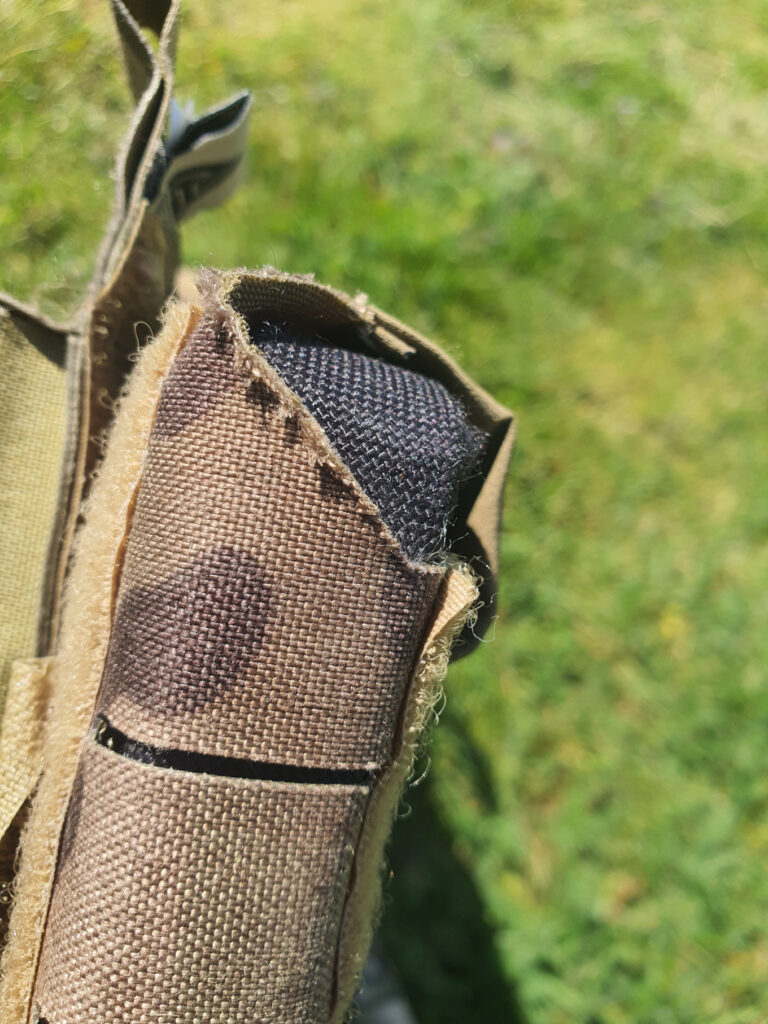A Wide Selection – Both a Convenience and a Challenge
In recent years, we’ve witnessed remarkable growth in the shooting community—and with it, the entire industry. From clothing and uniforms to gear and firearms, the market has expanded rapidly. Finding equipment is no longer a problem; the real challenge is finding gear that matches the user’s needs at a reasonable price. You can rely on the reputation of overseas companies, where proven quality comes with a solid price tag. On the other hand, browsing offers from smaller or lesser-known brands can be overwhelming—and most importantly, there’s often a lack of user reviews to help guide your decision.
Plate carrier from Direct Action
One of the companies with extensive experience in manufacturing tactical gear—gaining increasing recognition on the Polish market—is Direct Action. All DA products are designed by former special forces soldiers. This not only means they’re creating gear tailored to their own operational needs, but they also have the ability to continuously consult on and modify the equipment, which is further tested by a new generation of soldiers. The brand’s catalog includes several ballistic plate carriers—commonly referred to more broadly as tactical vests. One of them is the Spitfire, described as a highly modular platform that can be easily adapted to suit the user’s individual needs and the mission at hand. But how does that hold up in practice?

A handful of basic facts
| Weight | 623 g for M size |
| Material | Laser-cut 500D Cordura, laminate, softshell |
| Modularity | - Interchangeable front panels, attachable directly or via buckles; - removable side cummerbund (included with PALS cells, compatible with side plate mounting); - zipper for mounting interchangeable back panels. |
| Additions | - Low-profile, reinforced drag handle, - attachment points for communication cables. |
Spitfire up close
Low weight without sacrificing functionality?
The first thing that stands out is the size and weight of the vest. It’s very lightweight—only 623 g in size M—yet the entire surface is covered with the PALS system, giving you plenty of space to work with. In most lightweight plate carriers, the reduced weight is achieved by cutting away excess material, leaving only the essential front and back sections for mounting gear. Naturally, this results in limited space for accessories. Direct Action, however, reduced the weight by using carefully selected materials and a specialized construction, maintaining full functionality across every part of the plate carrier.
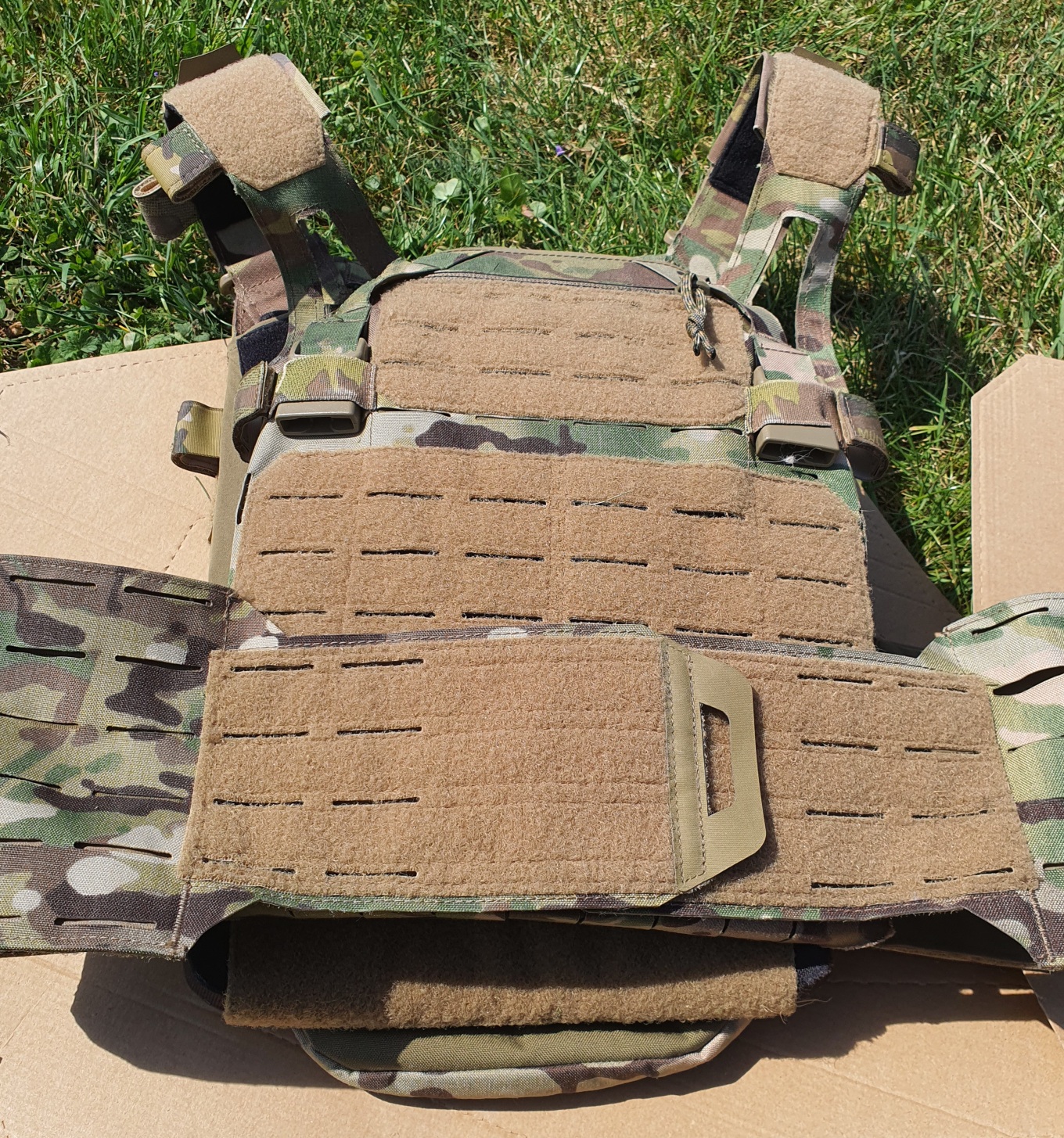

Inside the Spitfire
The interior side is made of softshell material, which keeps the thickness of the vest to a minimum. Naturally, this also helps reduce weight. The slightly stretchable fabric is a great choice, as ballistic plates can vary slightly in size depending on the manufacturer. Here, you don’t have to worry if your new plates turn out to be slightly larger or thicker. The material itself is soft, which significantly improves comfort during long hours of wear. In contrast, interiors made of Cordura with thick seams can press uncomfortably against the body — that’s not an issue here.
Additionally, soft hook-and-loop strips have been sewn in to allow the attachment of comfort pads, which improve airflow and increase comfort when wearing a heavy vest. For the past few months, however, I’ve been using the Spitfire without pads, which caused the plates to sit closer to the body — and as a result, I didn’t feel like I was wrapped up like a Ninja Turtle. Throughout this time, I had no complaints about comfort.
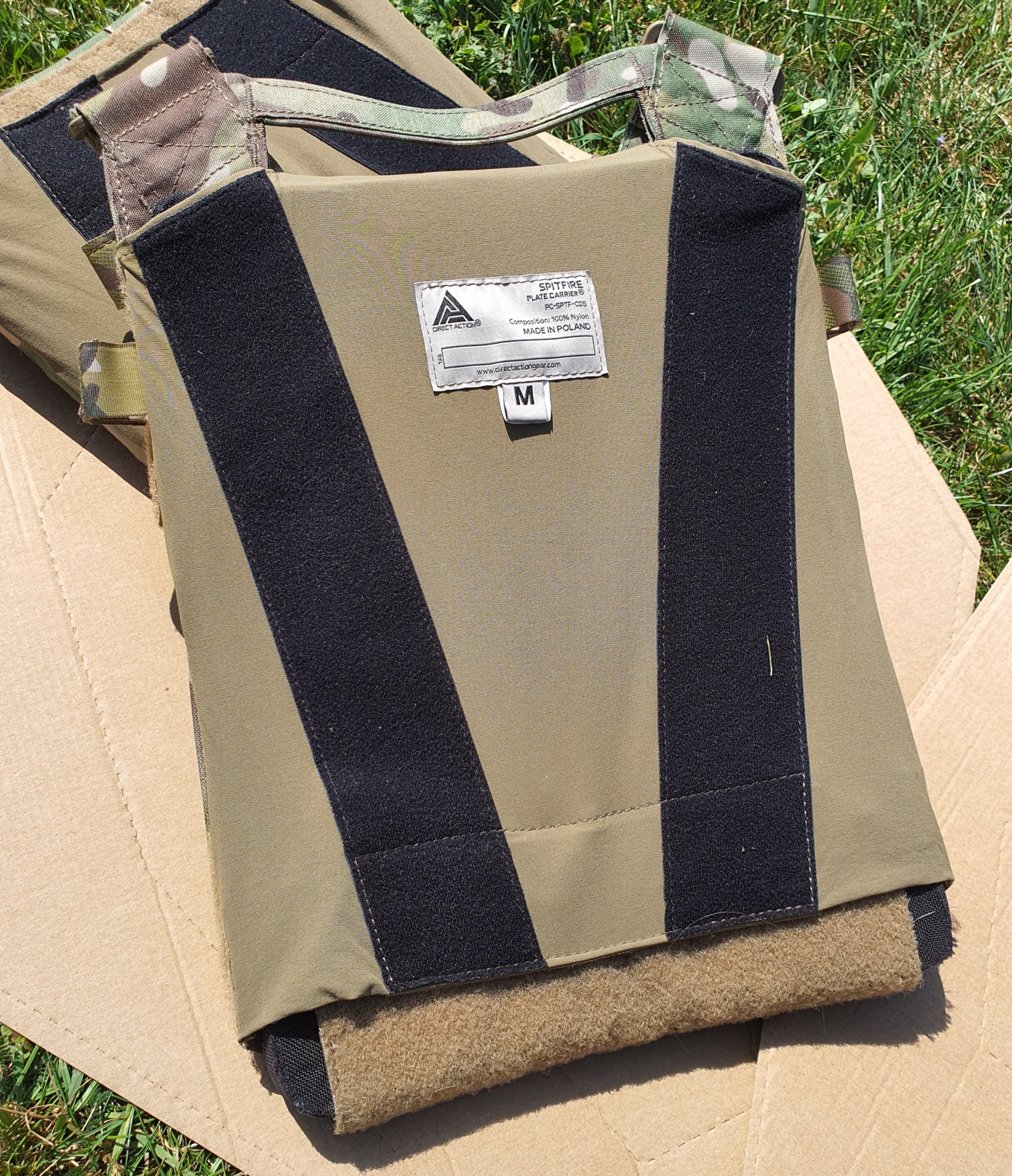
Material Stiffness
The 500D Cordura fabric used here is very thin (you can see the tight weave), yet it maintains enough stiffness to prevent looser components from folding or bunching up. The sewn-on hook-and-loop panels add just the right amount of rigidity to the front and back panels. Opening and closing the front panel during donning doesn’t give the impression that the fabric is stretching out. That kind of stretching can be not only irritating but also negatively impact how comfortably and quickly the vest can be put on or taken off. Fortunately, I didn’t experience any of that with the Spitfire.
A Few Words About the Shoulder Straps
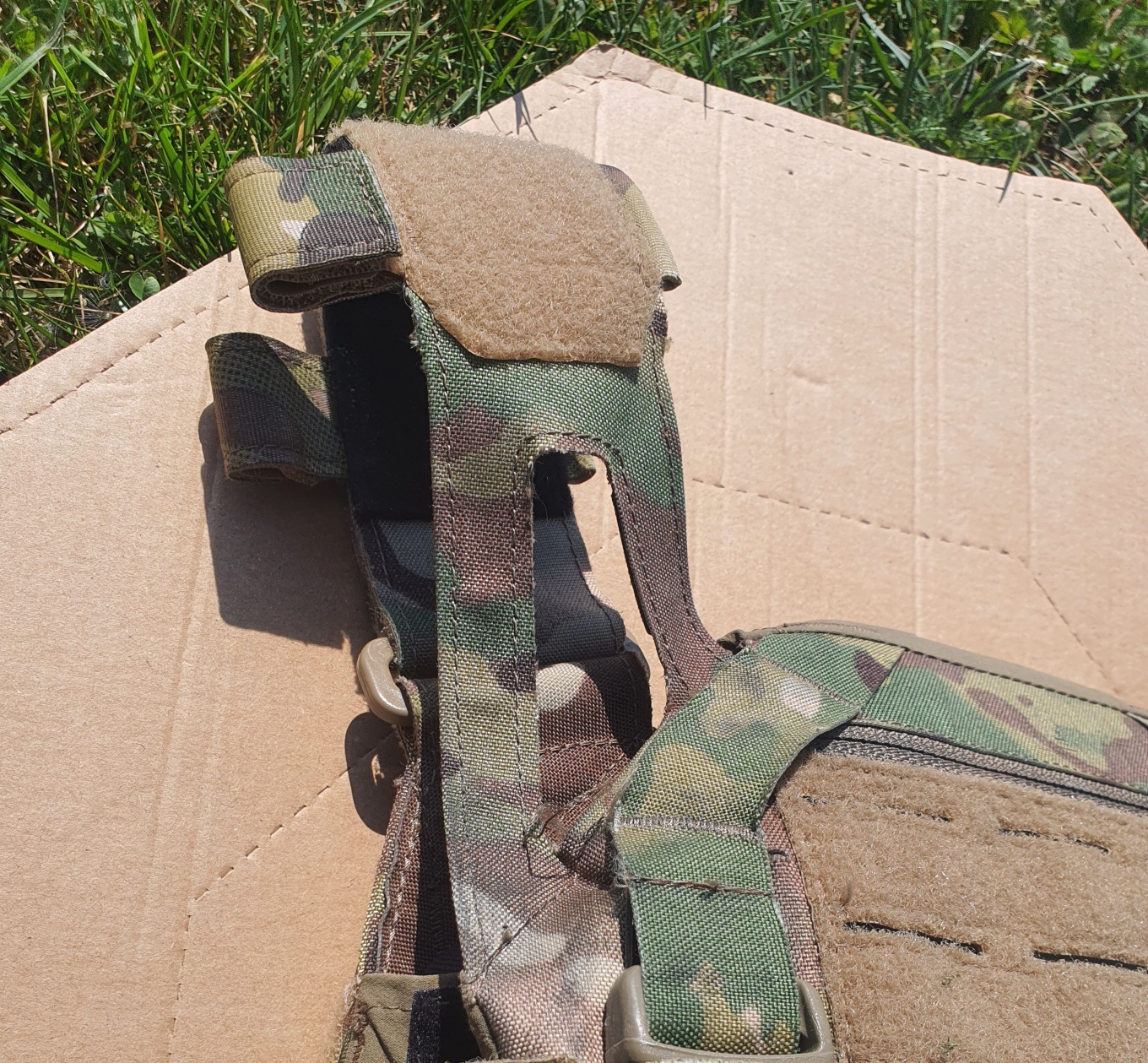
The shoulder straps are wide, flat, and significantly streamlined. Of course, you can add extra padding if needed, but I found the default configuration to work best. They sit close to the body, move smoothly on the shoulders, and the flat, widened section near the front panel doesn’t lift away from the chest. Their width ensures good weight distribution, so even with a heavily loaded vest, they don’t dig into the shoulders. On the inner side, about half a centimeter of overlapping material has been added to cover the sharp edge — a simple yet effective solution that protects the user’s neck from chafing.
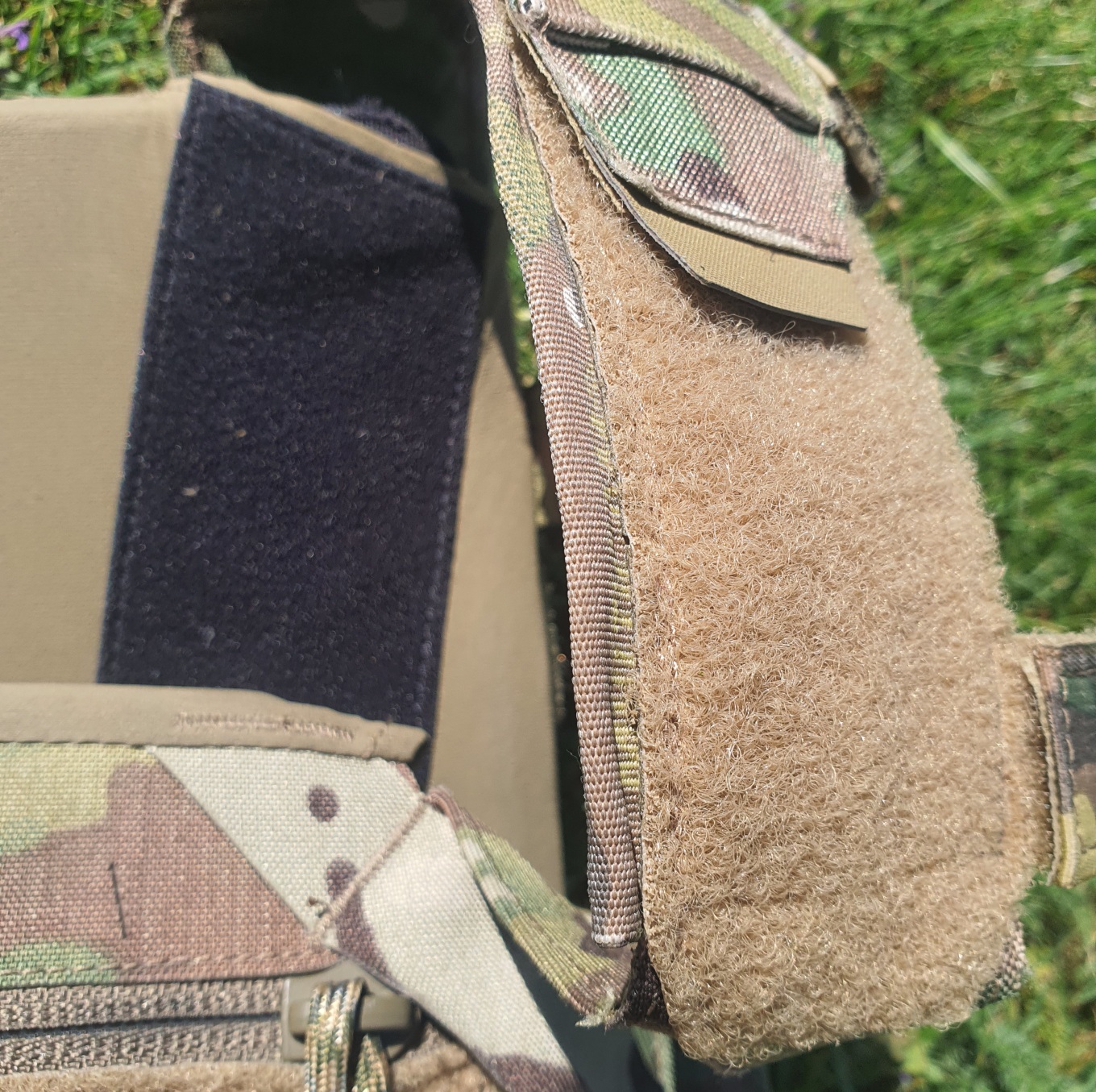
Modularity and scalability

Looking at the individual features, the designers’ intent is immediately clear — compatibility and the ability to quickly swap out accessories depending on the mission. With extra panels and pouches on hand, you can completely reconfigure the vest in 30 seconds, without having to rethread anything through the PALS system. I personally used three pre-configured panels: one with AR-15 magazine pouches, one with AR-15 pouches plus shotgun shell holders, and another for submachine gun magazines (in my case, for the Scorpion Evo). A fourth blank panel can be customized by adding separately purchased pouches, allowing you to build a personalized setup. Just unclip the buckles, and you’ve got a brand-new chest loadout.

The same applies to the rear panel on the back. The experts at Direct Action have developed several versions to suit a wide range of users. They’ve also designed a backpack that, just like the panels, can be attached using the rear zipper system.
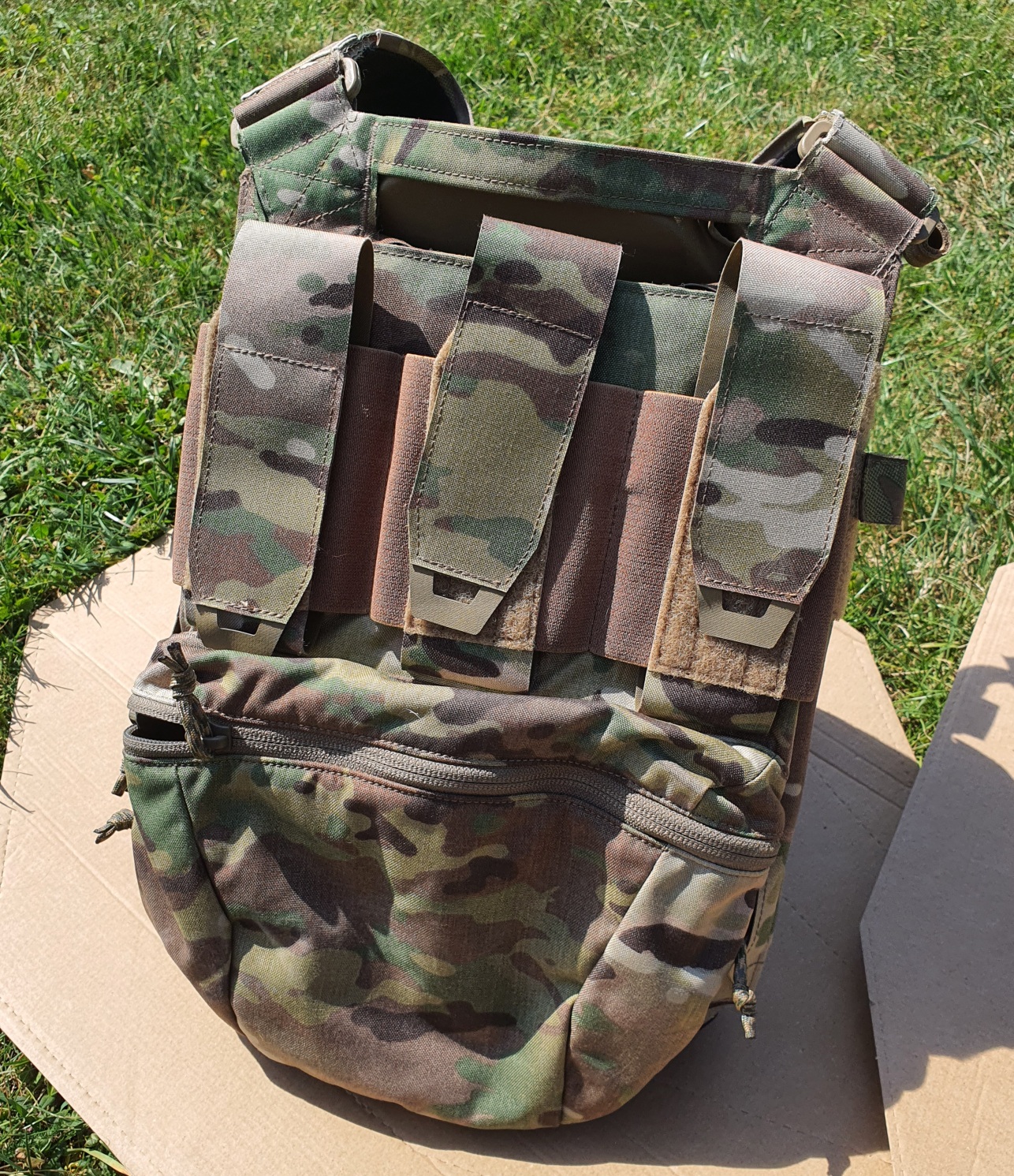
In my opinion, this solution is absolutely outstanding. I think anyone who’s ever had to work in a plate carrier knows the frustration of needing to carry extra gear in a backpack. The additional backpack straps layered over the carrier’s shoulder straps, both often thickly padded for comfort 😉, either ended up bunched up around your ears or sitting side by side, which in turn crushed the backpack’s structure. Not to mention that most backpack frames are designed to rest directly on your back, not on top of a vest. Now, finally, we have the option to configure a plate carrier in a way that allows us to carry a serious amount of gear. And when the mission requires a different loadout, all it takes is a quick panel swap and you’re ready to go.

In case someone finds other types of pouches absolutely essential, they can be attached to the blank panel using the well-known PALS system.
Spitfire in action
Interaction with the body
As I mentioned earlier, I used the Direct Action Spitfire at the range and during training sessions for nearly a year. During that time, I regularly changed gear configurations, though that’s a topic for the second part of the review, so here I’ll focus solely on the plate carrier itself.
The first thing any user will notice when putting on the vest is its comfort. Or more accurately, not whether it’s comfortable, but whether anything clearly gets in the way. When you’re carrying well over a dozen kilograms of gear, even the smallest detail can become a serious problem after several hours of hard work.
As mentioned before, I used the Spitfire without padding, so I could feel the hard plate against my body, yet it didn’t bother me. That was partly thanks to the soft inner material, which doesn’t cause chafing, and partly due to the cummerbund, which includes an elastic section for added flexibility.
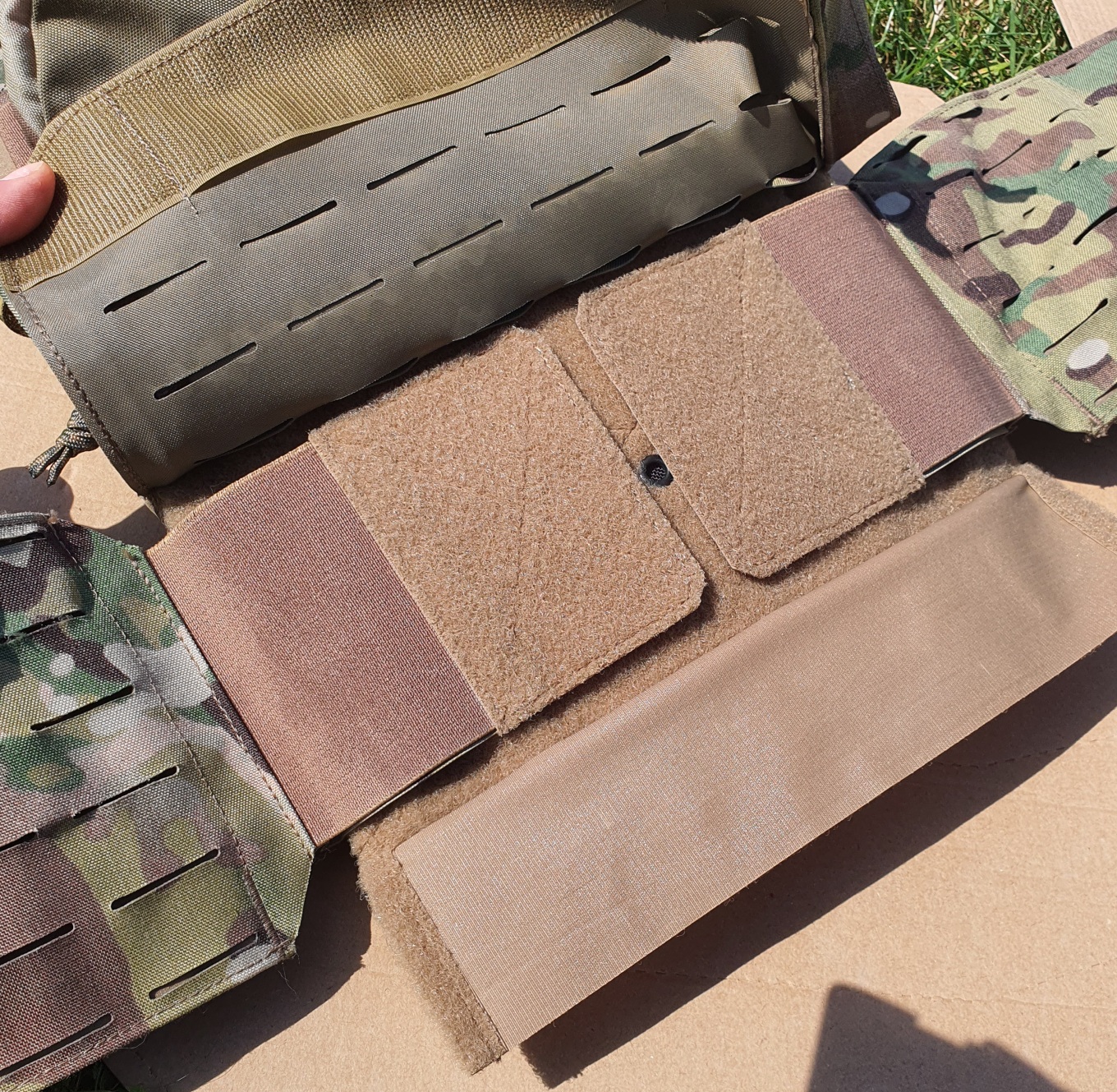
The vest fit closely to my body and didn’t shift from side to side, while the straps stretched just enough during movement to prevent the plates from digging in. Being able to use it without pads reduces bulk, making it much more comfortable, for example, when getting in and out of a vehicle with gear on.
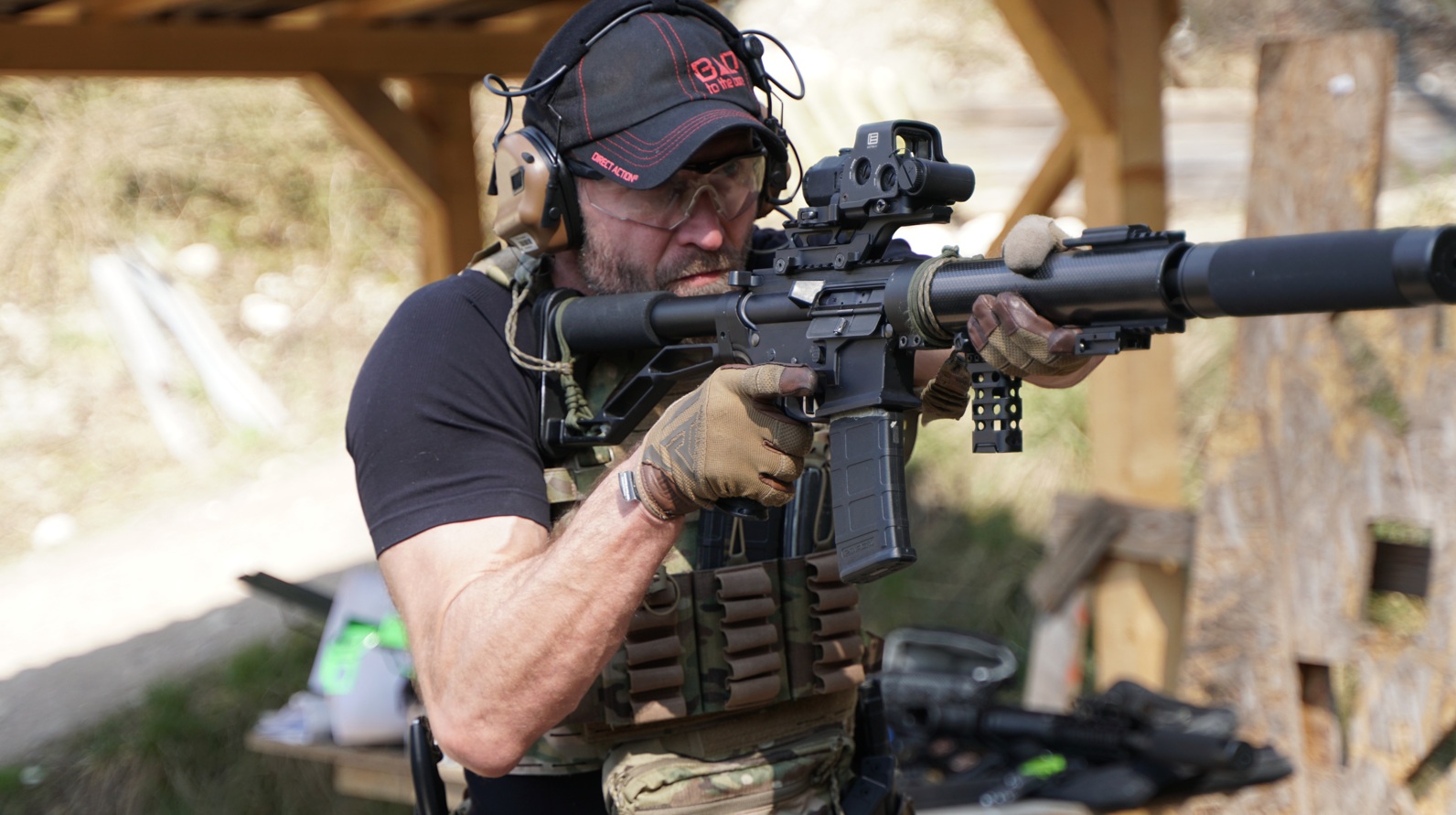
Finally, the vest featured wide and flat shoulder straps—broad enough not to dig into the body, yet minimalist enough not to stick out. And that brings a whole list of advantages:
- When you need to wear a backpack over the vest, the backpack straps sit much better on the shoulders.
- Thanks to this design, they don’t get in the way when aiming a weapon. The stock rests naturally against the body instead of shifting around on overly bulky shoulder straps, as is often the case.
- When changing positions and the vest moves up and down with your body, thick straps tend to ride up toward your ears—there’s no such issue here.
For a vest to provide proper protection, it must ensure correct placement of the plates on the body. Large, rigid vests designed to carry both hard and soft armor behave like body armor—they sit the same way every time. With simpler plate carriers, the front plate often sags while the rear plate rises due to the uneven weight distribution from the type and amount of gear being carried. Wide, and therefore stiff, side straps don’t fully solve the issue. An attachable rear panel acts as a counterweight, keeping the front plate at the correct height—where it protects the heart, not where it drops down toward the waist.
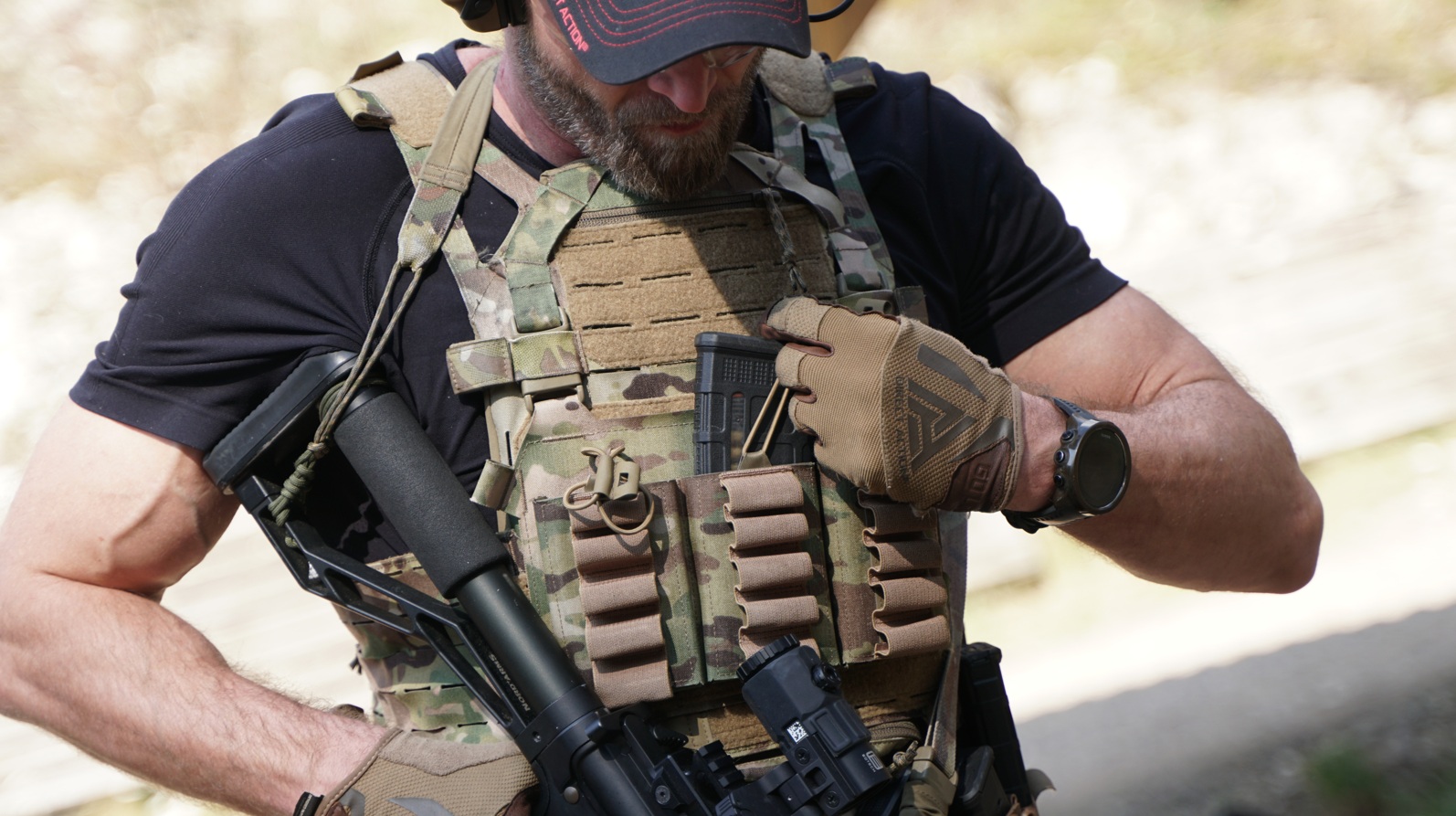
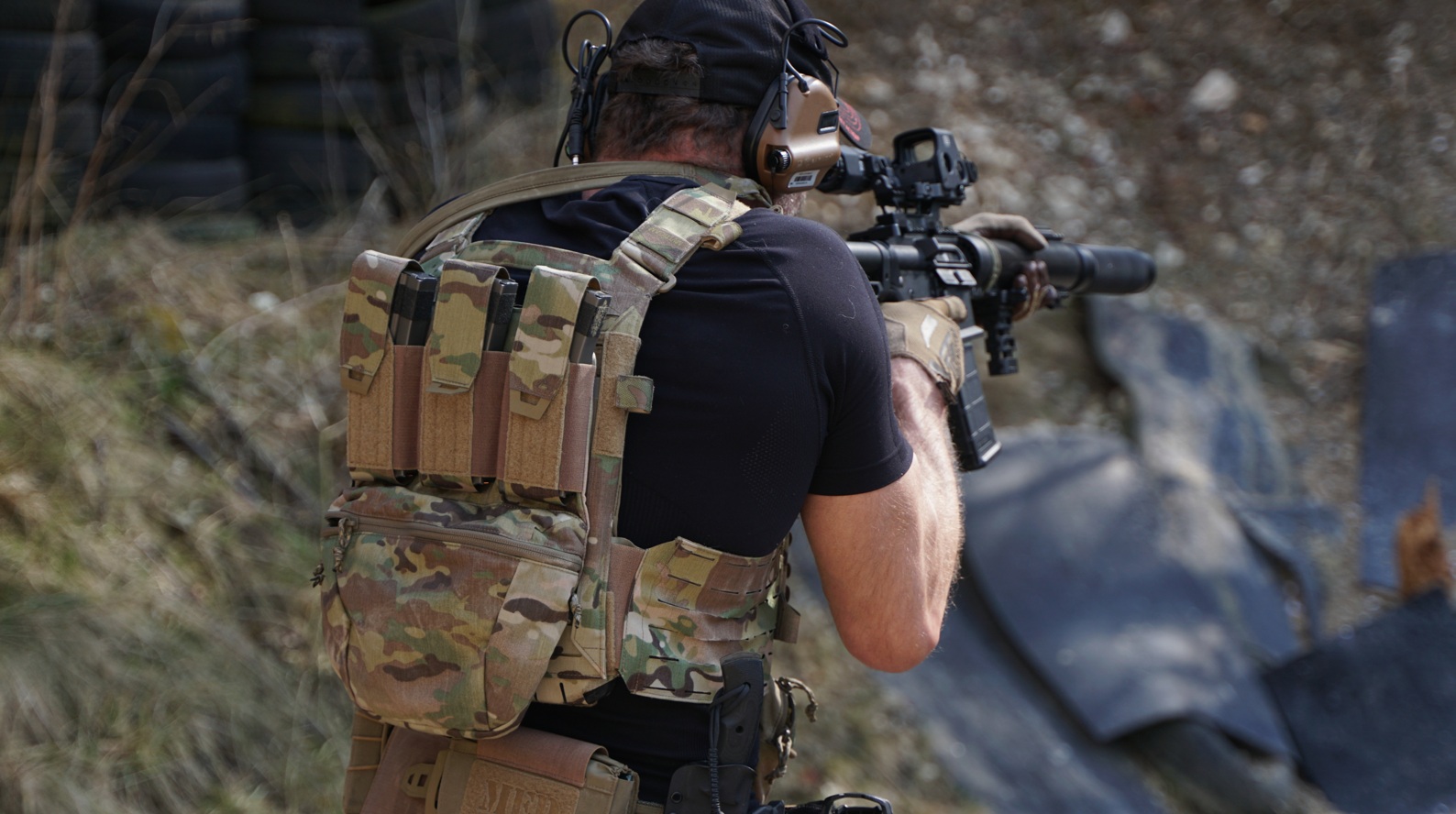
Spitfire under fire
While shooting, I came to truly appreciate the design of the Spitfire. After all, a vest isn’t just meant to protect—it’s also for carrying gear, and most importantly, it must allow for effective combat performance.
The shoulder strap design makes them barely noticeable when firing. The flat straps sit close to the body, allowing you to shoulder the stock with ease, without losing stability or weapon feel. While at the range—under ideal conditions and shooting from a single position (usually standing)—most people can find a way to make it work. But in real scenarios, where shooting positions change and time pressure is added, even the smallest element that interferes with consistent target acquisition becomes noticeable.
The prone position is usually problematic due to the size of the armor. With the Spitfire, I was able to lie flat and stable enough that after a few attempts, I found a repeatable shooting posture. The front panel, with only the thickness of the plate and a single row of magazines, combined with the consistent positioning of the front and rear plates (thanks to the snug side strap adjustment), has provided the highest level of comfort I’ve experienced so far.
The build quality is excellent, and after a year of use, the only visible wear is some slight fraying on the edges of the laser-cut webbing. Wear is also noticeable on components like pouches made with elastic inserts, mainly due to friction from magazine edges during repeated draws and reinsertions. However, so far this wear is purely cosmetic and hasn’t affected functionality. Just like with a car, consumable parts need to be replaced from time to time—and in this case, I expect it’ll still be quite a while before that’s necessary.
Conclusions
The Direct Action Spitfire is not just a well-crafted plate carrier — it’s a thoughtfully designed load-bearing system with accessories that allow for quick adaptation of panels and pouches to suit specific tasks. Despite its compact size, it enables efficient packing of a large amount of gear while still providing the freedom of movement needed for running, changing shooting positions, and, most importantly, aiming the weapon with ease. In my opinion, to fully appreciate everything the Spitfire has to offer, you need to invest in an expanded set of accessories. In return, you get a perfectly integrated system built to withstand the demands of hard use for years to come.
Part 2, where I’ll cover the full range of Spitfire accessories in detail, is coming soon.
We would like to thank Direct Action for providing the Spitfire Plate Carrier and a full set of modules and accessories in MultiCam camouflage for testing.
- front panels Spitfire MK II Slick Carbine Mag Flap, Skeletonized Shotgun Shell Flap, Skeletonized Quad SMG Flap, Spitfire MOLLE Flap,
- rear panel Spitfire Assault Panel and backpack Spitfire MK II Backpack Panel,
- pouch Underpouch Light.
Sponsored collaboration. Product testing is conducted independently, and all opinions reflect the author’s personal assessment. The sponsor has no influence over the content of the review.


